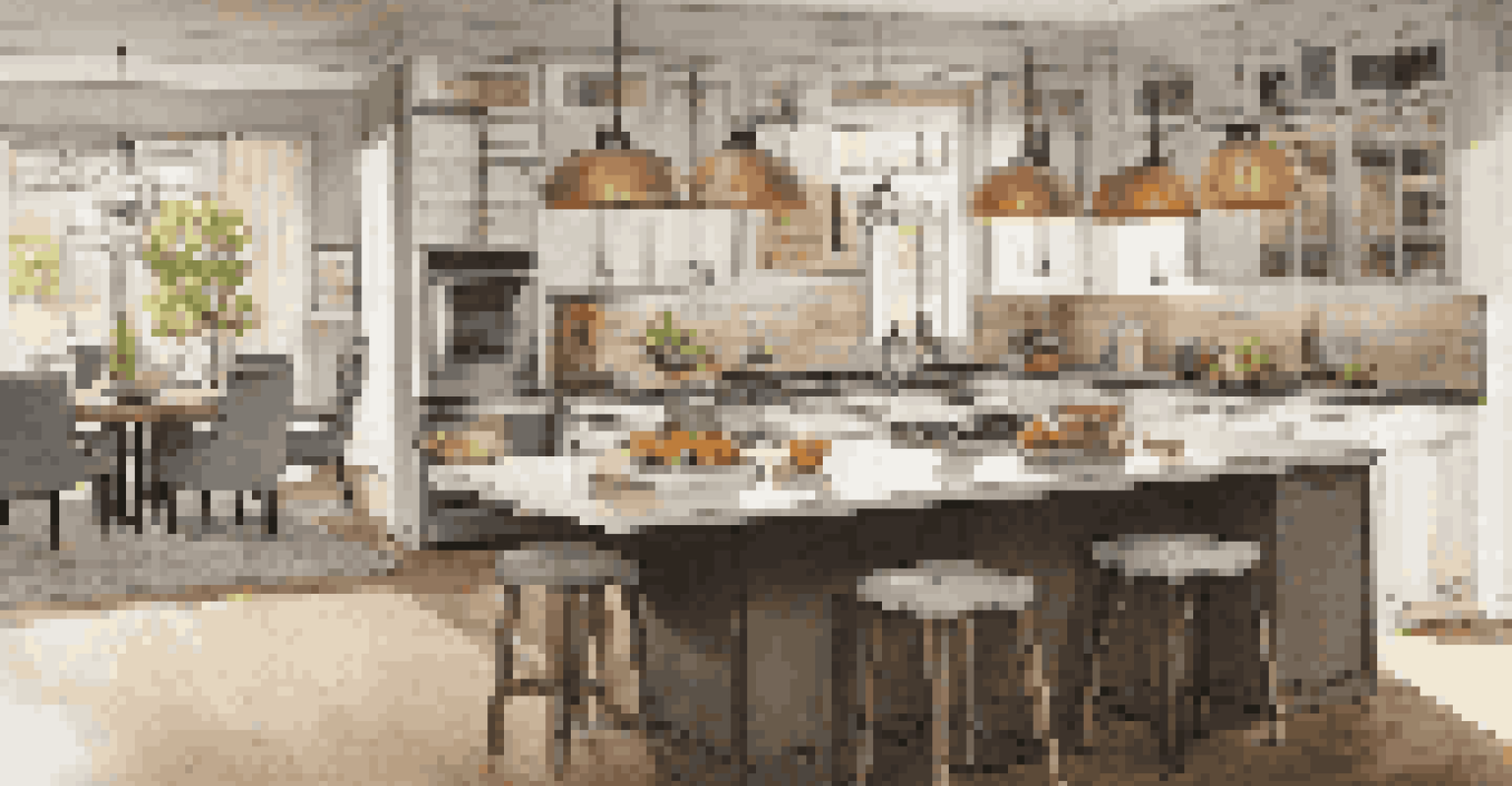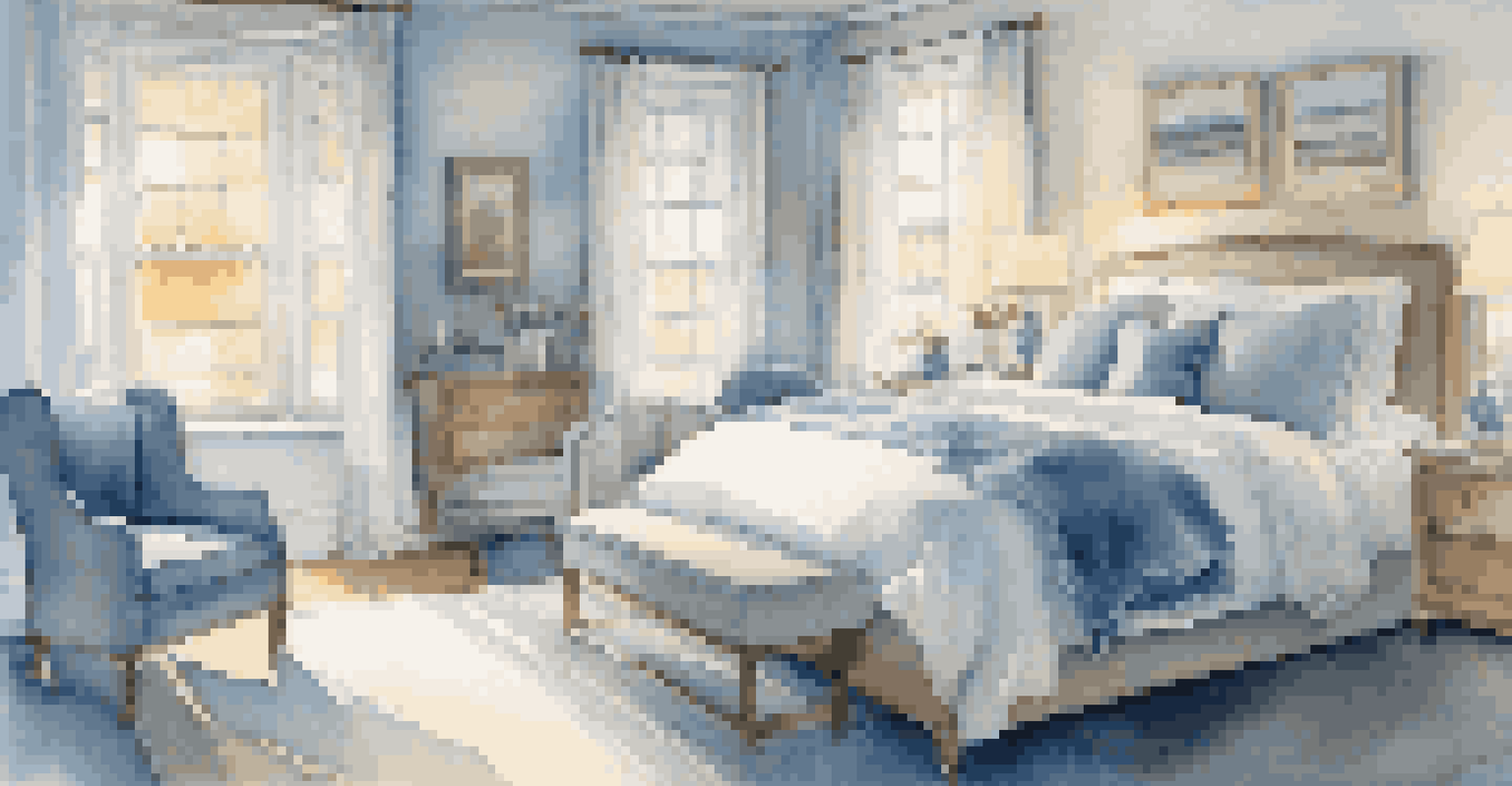How to Choose Lighting That Supports Your Daily Activities

Understanding the Importance of Lighting in Daily Life
Lighting plays a crucial role in our daily activities, influencing mood, productivity, and even safety. The right lighting can enhance focus while reducing eye strain, making it essential for both work and leisure. Conversely, poor lighting can lead to fatigue and hinder performance, so understanding its importance is the first step in making informed choices.
Lighting is the first step in showing off your home’s best features.
Think about how you feel in different lighting conditions. For instance, soft, warm lighting can create a cozy environment for relaxation, while bright, cool lighting is ideal for tasks that require concentration, such as reading or working on a computer. By recognizing how lighting affects your environment, you can tailor your choices to better suit your needs.
Ultimately, the goal is to create a balanced lighting scheme that supports your activities throughout the day. This means considering not just the type of tasks you do, but also the time of day and how natural light interacts with your space.
Assessing Different Types of Lighting: Ambient, Task, and Accent
When choosing lighting, it's essential to understand the three main types: ambient, task, and accent. Ambient lighting provides overall illumination for a space, creating a comfortable level of brightness without glare. Think of it as the foundation of your lighting design, setting the stage for the other types to shine.

Task lighting, on the other hand, is focused lighting that helps illuminate specific areas for activities like reading or cooking. A well-placed desk lamp or under-cabinet lights are great examples of task lighting designed to make certain tasks easier and safer. This type is crucial in areas where precision is needed.
Lighting Affects Mood and Productivity
The right lighting can enhance focus and reduce eye strain, impacting both work and relaxation.
Accent lighting serves as a decorative element, highlighting artwork or architectural features. While it may not be essential for functionality, it adds flair and personality to your space. By combining all three types, you can create a layered lighting design that enhances both form and function.
Evaluating Your Space: Size and Layout Considerations
Before making lighting decisions, consider the size and layout of your space. Large, open areas may require multiple light sources to avoid dark corners, while smaller rooms might benefit from strategic placement of a few fixtures. Taking measurements and visualizing how light will spread can help you avoid over- or under-lighting any area.
Good lighting is essential to create a warm and inviting atmosphere in any space.
Additionally, think about the layout and how people move through the space. For example, in a kitchen, task lighting over work surfaces is essential, while ambient lighting should fill the entire room. This thoughtful approach can help create a harmonious flow that enhances functionality.
Lastly, consider any architectural features that may influence your lighting choices, such as high ceilings or large windows. Tailoring your lighting to complement these elements can make your space feel more cohesive and inviting.
Choosing the Right Bulbs: Brightness and Color Temperature
When selecting light bulbs, two critical factors come into play: brightness and color temperature. Brightness is measured in lumens; the higher the lumens, the brighter the light. For instance, a reading nook may require brighter bulbs, while a cozy living room might benefit from softer lighting.
Color temperature, measured in Kelvins, affects the mood of a space. Warm white light (around 2700K) creates a cozy atmosphere, while cool white light (around 4000K) feels more energizing and is ideal for workspaces. Understanding these aspects helps you choose bulbs that enhance your daily activities.
Understand Lighting Types for Spaces
Using ambient, task, and accent lighting together creates a balanced and functional lighting design.
By selecting bulbs that meet your brightness and color temperature needs, you can significantly influence how a space feels and functions. This thoughtful approach ensures that you’re not just lighting a room; you’re enhancing the overall experience within it.
Utilizing Natural Light: The Benefits of Daylight
Natural light has a profound impact on our well-being, so it's essential to harness it whenever possible. Large windows or skylights can flood a room with daylight, creating a vibrant and uplifting atmosphere. Positioning furniture to maximize exposure to natural light can also enhance the functionality of your space.
Incorporating reflective surfaces, such as mirrors or light-colored walls, can help distribute natural light throughout the room. This not only brightens the space but also creates an illusion of more space, making it feel more open and inviting. Consider how you can use these elements to your advantage.
Remember to also consider window treatments that allow you to control the amount of natural light entering your space. Sheer curtains can soften harsh sunlight while still allowing light to filter through, creating a pleasant ambiance for daily activities.
Incorporating Smart Lighting Solutions
Smart lighting technology has revolutionized how we approach illumination in our homes. With smart bulbs and fixtures, you can control the brightness and color temperature with just a tap on your smartphone or even your voice. This level of control allows for a personalized lighting experience tailored to your daily activities.
For instance, you can set different lighting scenes for various activities—bright and cool for work, warm and dim for movie nights. This adaptability not only enhances comfort but also contributes to energy efficiency by allowing you to turn off lights when they're not needed.
Smart Lighting Enhances Control
Smart lighting technology allows for customizable brightness and color, improving energy efficiency and comfort.
Additionally, many smart lighting systems can be programmed to adjust automatically based on the time of day, ensuring that your space is always lit just right. Embracing this technology allows you to elevate your lighting game and create a truly functional space.
Creating a Lighting Plan That Fits Your Lifestyle
A thoughtful lighting plan is essential for ensuring that your space meets your lifestyle needs. Start by listing your daily activities and the areas where they occur; this will help you identify where specific types of lighting are required. For example, a home office may need bright task lighting, while a bedroom might benefit from softer ambient lighting.
Once you have a clear picture of your needs, sketch out a plan that incorporates various types of lighting in each area. Be sure to include flexibility in your plan, allowing for adjustments as your activities or preferences change over time. This adaptability will keep your lighting effective and relevant.

Finally, don't forget to consider the aesthetic aspects of your lighting choices. The fixtures and bulbs you select should not only serve a functional purpose but also enhance the overall decor of your home. By marrying function and style, you can create an inviting and practical living space.